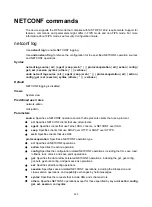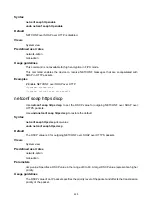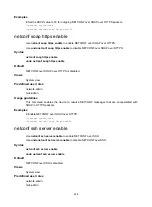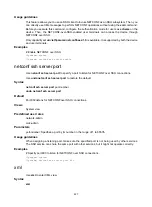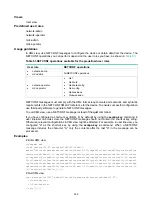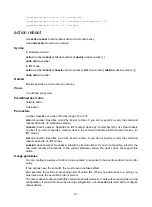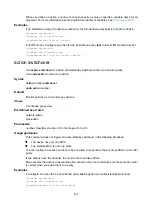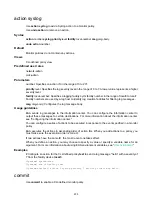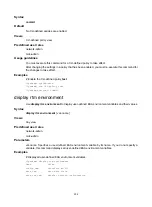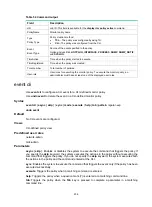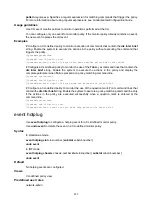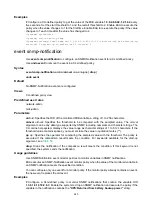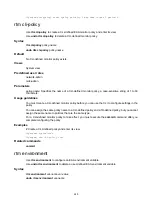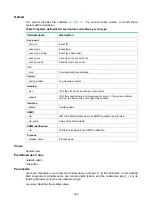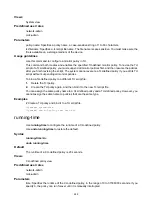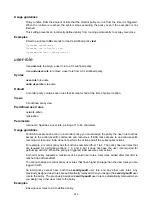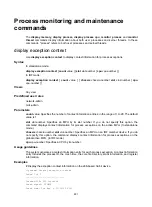
237
pattern
regular-exp
: Specifies a regular expression for matching commands that trigger the policy.
For more information about using regular expressions, see
Fundamentals Configuration Guide
.
Usage guidelines
Use CLI event monitor policies to monitor operations performed at the CLI.
You can configure only one event for a monitor policy. If the monitor policy already contains an event,
the new event replaces the old event.
Examples
# Configure a CLI-defined policy to monitor execution of commands that contain the
dis inter brief
string. Enable the system to execute the actions in the policy without executing the command that
triggers the policy.
<Sysname>system-view
[Sysname] rtm cli-policy test
[Sysname-rmt-test] event cli async skip mode execute pattern dis inter brief
# Configure a CLI-defined policy to monitor the use of the
Tab
key at command lines that contain the
dis inter brief
string. Enable the system to execute the actions in the policy and display the
complete parameter when
Tab
is pressed at a policy-matching command line.
<Sysname> system-view
[Sysname] rtm cli-policy test
[Sysname-rmt-test] event cli async mode tab pattern dis inter brief
# Configure a CLI-defined policy to monitor the use of the question mark (?) at command lines that
contain the
dis inter brief
string. Enable the system to execute a policy-matching command line only
if the actions in the policy are executed successfully when a question mark is entered at the
command line.
<Sysname>system-view
[Sysname] rtm cli-policy test
[Sysname-rmt-test] event cli sync mode help pattern dis inter brief
event hotplug
Use
event hotplug
to configure a hotplug event for a CLI-defined monitor policy.
Use
undo event
to delete the event in a CLI-defined monitor policy.
Syntax
In standalone mode:
event hotplug slot
slot-number
[
subslot
subslot-number
]
undo event
In IRF mode:
event hotplug chassis
chassis-number
slot
slot-number
[
subslot
subslot-number
]
undo event
Default
No hotplug events are configured.
Views
CLI-defined policy view
Predefined user roles
network-admin

